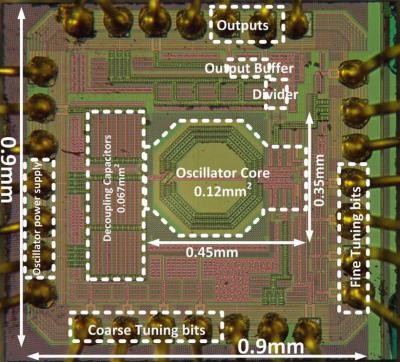EE4600 Wireless Concepts and Systems
In this course, you will learn to understand and design wireless systems, using the properties of their (circuit based) building blocks, e.g.; low-noise amplifiers (LNAs), amplifiers, filters, mixers, oscillators, ADCs and DACs. These circuit blocks will be addressed at their functional level, described in terms of: gain, noise, linearity, frequency selectivity, conversion gain, image rejection, spurs, phase noise, quantization noise, and bandwidth, as well as other parameters. These physical constraints determine the achievable signal quality, maximum data rate, selectivity and sensitivity of a wireless system.
To handle these circuit block imperfections and address trends in terms of cost reduction and system integration, over time various wireless architectures have been developed, which will be discussed during the lecture. Special attention will be given to the new 5th generation (5G) wireless systems that aim for a 100x-1000x increase in capacity.
The lecture series starts at a basic level, explaining the causes and impact of device/ circuit nonlinearities and noise. Following from that, a conclusion can be made for the (spurious-free) dynamic range, harmonics, and intermodulation products in amplifiers and mixers. When considering mixers, limitations in port-isolation, IQ unbalance and linearity will be viewed in terms of their spurious responses. For oscillators, detailed attention will be given to the impact of phase noise, limits due to resonator Q and frequency tunability and spurs.
The outline of the course is as follows;
- Brief overview of wireless systems at RF / mm-wave / THz frequencies
- Basic concepts in RF Design.
- Noise, Nonliearity, Sensitivity, and Dynamic Range
- Passive Impedance Transformation and Scattering Parameters (HW1).
- Communication Concepts, Analog/Digital Modulations, and Pulse shaping
- Transmitter Architectures (HW2).
- Mixer, Oscillatior, and Link Budget
- Receiver Architectures (HW3)
The lectures are accompanied by real-life wireless design problems (labs) which have to be solved using professional simulation tools like Agilent's Advanced Design System (ADS) and MATLAB.
Study Goals
Learn to understand, analyze, design, simulate and optimize the wireless communication architectures.
Education Method: Lectures + homeworks
Literature and Study Materials: Hand-outs + recommended books
Assessment: RF design related homework’s (50% final grade) + written exam (50% final grade)
Teachers
prof.dr. Leo de Vreede (ELCA)
RF, Microwave, Power Amplifiers, Digital Transmitters, Device Characterization & modeling
dr. Masoud Babaie (ELCA)
RF circuits
dr. Morteza Alavi (ELCA)
RF Integrated Circuit
Last modified: 2023-11-04

Details
| Credits: | 5 EC |
|---|---|
| Period: | 0/3/0/0 (not running) |
| Contact: | Leo de Vreede |